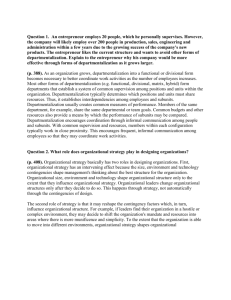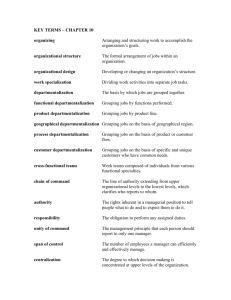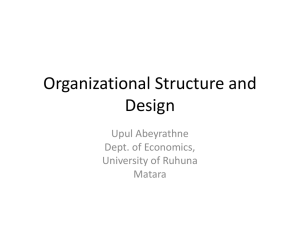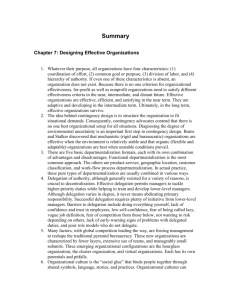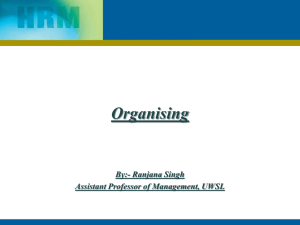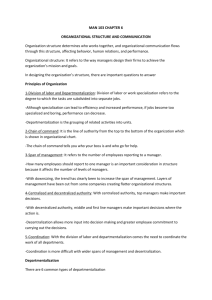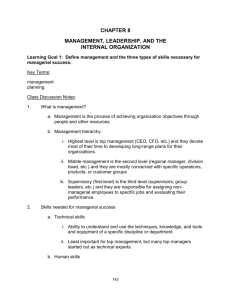Organizational cultures, organizational structures
advertisement
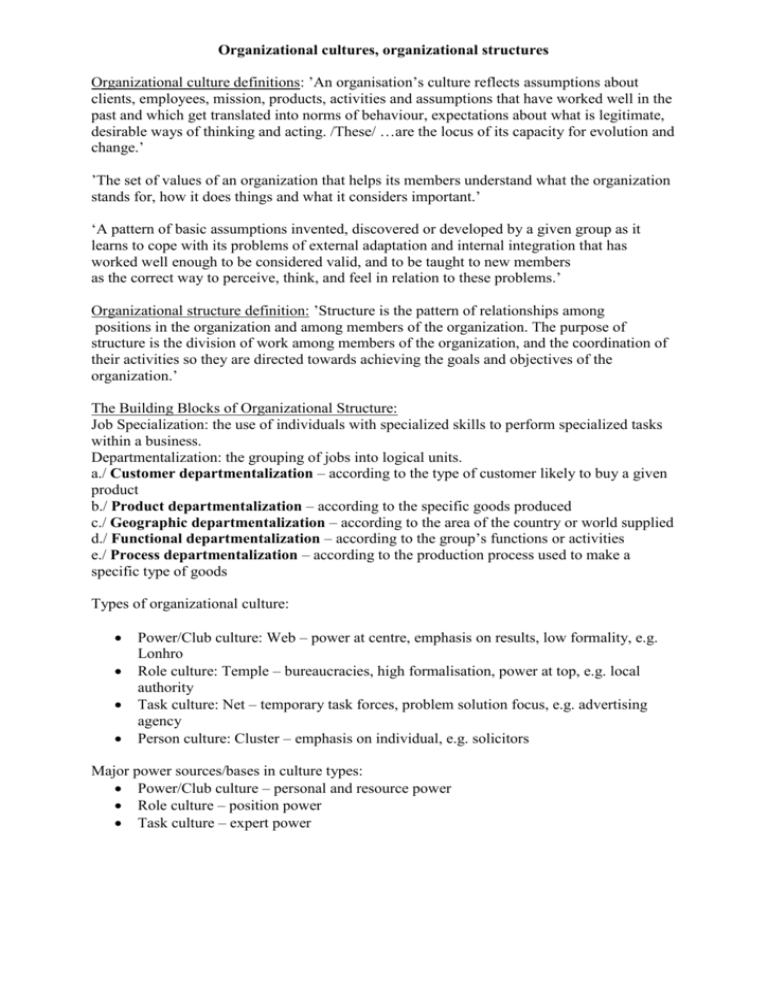
Organizational cultures, organizational structures Organizational culture definitions: ’An organisation’s culture reflects assumptions about clients, employees, mission, products, activities and assumptions that have worked well in the past and which get translated into norms of behaviour, expectations about what is legitimate, desirable ways of thinking and acting. /These/ …are the locus of its capacity for evolution and change.’ ’The set of values of an organization that helps its members understand what the organization stands for, how it does things and what it considers important.’ ‘A pattern of basic assumptions invented, discovered or developed by a given group as it learns to cope with its problems of external adaptation and internal integration that has worked well enough to be considered valid, and to be taught to new members as the correct way to perceive, think, and feel in relation to these problems.’ Organizational structure definition: ’Structure is the pattern of relationships among positions in the organization and among members of the organization. The purpose of structure is the division of work among members of the organization, and the coordination of their activities so they are directed towards achieving the goals and objectives of the organization.’ The Building Blocks of Organizational Structure: Job Specialization: the use of individuals with specialized skills to perform specialized tasks within a business. Departmentalization: the grouping of jobs into logical units. a./ Customer departmentalization – according to the type of customer likely to buy a given product b./ Product departmentalization – according to the specific goods produced c./ Geographic departmentalization – according to the area of the country or world supplied d./ Functional departmentalization – according to the group’s functions or activities e./ Process departmentalization – according to the production process used to make a specific type of goods Types of organizational culture: Power/Club culture: Web – power at centre, emphasis on results, low formality, e.g. Lonhro Role culture: Temple – bureaucracies, high formalisation, power at top, e.g. local authority Task culture: Net – temporary task forces, problem solution focus, e.g. advertising agency Person culture: Cluster – emphasis on individual, e.g. solicitors Major power sources/bases in culture types: Power/Club culture – personal and resource power Role culture – position power Task culture – expert power Organisations can change their culture Most start as power cultures, e.g. when they are small, as they grow, they may shift to a role culture, when confronted with the need for greater flexibility, can shift to task culture. Within the organization different parts, e.g. departments can have different cultures and all of them can be combined. Deal and Kennedy Deal and Kennedy defined organizational culture as the way things get done around here. They measured organizations in respect of: Feedback - quick feedback means an instant response. This could be in monetary terms, but could also be seen in other ways, such as the impact of a great save in a soccer match. Risk - represents the degree of uncertainty in the organization’s activities. Using these parameters, they were able to suggest four classifications of organizational culture: The Tough-Guy Macho Culture. Feedback is quick and the rewards are high. This often applies to fast moving financial activities such as brokerage, but could also apply to a police force, or athletes competing in team sports. This can be a very stressful culture in which to operate. The Work Hard/Play Hard Culture is characterized by few risks being taken, all with rapid feedback. This is typical in large organizations, which strive for high quality customer service. It is often characterized by team meetings, jargon and buzzwords. The Bet your Company Culture, where big stakes decisions are taken, but it may be years before the results are known. Typically, these might involve development or exploration projects, which take years to come to fruition, such as oil prospecting or military aviation. The Process Culture occurs in organizations where there is little or no feedback. People become bogged down with how things are done not with what is to be achieved. This is often associated with bureaucracies. While it is easy to criticize these cultures for being overly cautious or bogged down in red tape, they do produce consistent results, which is ideal in, for example, public services. Charles Handy Charles Handy (1985) popularized the 1972 work of Roger Harrison of looking at culture which some scholars have used to link organizational structure to organizational culture. He describes Harrison's four types thus: a Power Culture which concentrates power among a few. Control radiates from the center like a web. Power Cultures have few rules and little bureaucracy; swift decisions can ensue. In a Role Culture, people have clearly delegated authorities within a highly defined structure. Typically, these organizations form hierarchical bureaucracies. Power derives from a person's position and little scope exists for expert power. By contrast, in a Task Culture, teams are formed to solve particular problems. Power derives from expertise as long as a team requires expertise. These cultures often feature the multiple reporting lines of a matrix structure. A Person Culture exists where all individuals believe themselves superior to the organization. Survival can become difficult for such organizations, since the concept of an organization suggests that a group of like-minded individuals pursue the organizational goals. Some professional partnerships can operate as person cultures, because each partner brings a particular expertise and clientele to the firm.
